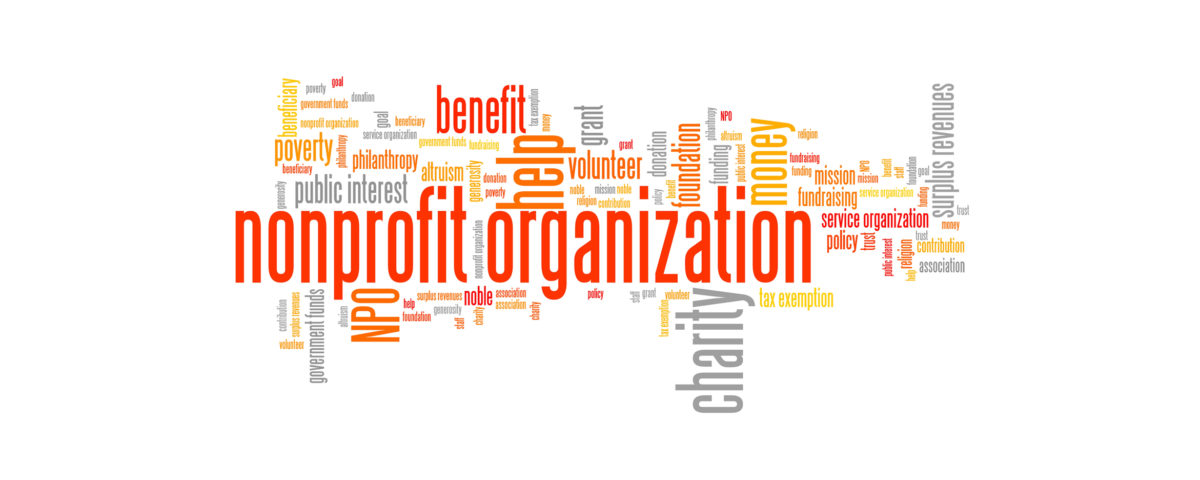Cynthia Young – How Nonprofits Work

Nonprofit organizations issues and concepts word cloud illustration. Word collage concept.
Cynthia Young – How Nonprofits Work reveals one writer’s perspective on who, what, where and why nonprofits. Here’s what Cynthia has to share:
Not every reader understands what an NPO is and what its members do. Thus, first of all, it’s necessary to define the basic concepts. NPOs are any nonprofit organization that does not pursue the goal of making a profit and dividing income among its members. There are more than a dozen legal forms of NPOs.
And if you want to learn about all their types and not spend a lot of time searching for information, order detailed research on Best Writers Online. In the meantime, we’ll present you a few of the most popular:
✔️ Consumer cooperative. Legal entities or citizens who have voluntarily joined can create it. The goal of such an organization is to meet each member’s material and other needs of the cooperative. A consumer cooperative may have some attributes of a production cooperative, but the main difference is its nonprofit interest.
✔️ Organizations associated with religion or social ideas. These individuals have come together voluntarily and whose primary purpose is to satisfy spiritual or non-material interests.
✔️ Foundations consist of a group of legal persons or citizens who voluntarily contribute a certain amount to a shared wallet for charitable use for social, cultural, and other needs.
✔️ Institutions. These are NPOs whose purpose is to manage in the socio-cultural or other spheres. The owner partially or fully finances the project.
✔️ Unions or associations of legal entities. Their main goal is to coordinate entrepreneurial or other activities or protect society’s interests.
The goals of nonprofit organizations may be different. Still, the main difference between commercial companies is the creation without material benefit in the future for the members of the NPO and social orientation. The company’s founders must have a common idea and pursue one goal, which doesn’t bring them income.
Cynthia Young – How Nonprofits Work
 NPOs are created only in certain forms, which are regulated by law. Therefore, the possibilities of nonprofit companies are not unlimited. NPOs function as legally independent entities, but they have their peculiarities. The company has a material and economic part on its balance sheet, but the principal capital consists of donations, grants, or voluntary contributions. NPOs are responsible for their obligations with property, which is their property.
NPOs are created only in certain forms, which are regulated by law. Therefore, the possibilities of nonprofit companies are not unlimited. NPOs function as legally independent entities, but they have their peculiarities. The company has a material and economic part on its balance sheet, but the principal capital consists of donations, grants, or voluntary contributions. NPOs are responsible for their obligations with property, which is their property.
But the peculiarities of functioning differ from commercial organizations in their focus. For example, the owners don’t try to make a profit for personal gain because they pursue ideological, religious, or social interests. The main requirements for NPOs are the profits made by the company for their intended purpose. For example, if funds are raised to treat children with cancer, the money must go to clinics with young patients or pay for medication.
The owners don’t always share the profits of a nonprofit organization among them. Exceptions include consumer cooperatives. They can divide profits according to a plan. Nonprofit organizations can engage in entrepreneurship if the proceeds go into the general fund for the purposes specified in the program projects. Many NPOs have to engage in entrepreneurship because the proceeds keep them “afloat.”
Unlike commercial companies, some forms of NPOs can operate without registration. In this case, an NPO is not an independent legal entity. It has no property and has no right to conduct transactions on its behalf or participate in legal proceedings. NPOs can be established for an indefinite period and for some time until achieving the planned goal. NPOs are no different from commercial companies in other functions. It’s also necessary to obtain a license to carry out some activities.
Documentation And Funding
According to the financial plan, the accountant may maintain control of the NPO’s internal funds, an essential document for the organization. The highest governing bodies approve it and may also make changes to it. Also, for individual projects, the accountant may prepare estimates that reflect the financial plan.
The most common form of a financial plan is a budget. If you want to learn more about nonprofit organizations, use the Writing Judge website to get only quality information. However, a nonprofit organization cannot go beyond the budget. Practically NPOs use several types of budgets:
- The plan reflects expenditures and revenues scheduled for the current year, combining projects and estimates.
- Applications for contracts and grants. The accountant budgets for one project, and there may be several funding sources.
- Cash accounting. It is a short-term budget for a short period — and accounts for the movement of cash: salaries, bill payments.
- Planning of fixed assets. This budget reflects funds that don’t have a purposeful name. The members use it for large expenditures, such as property acquisitions.
The budget is prepared by the accountant and management of the NPO and approved by the general council. It is the primary management document of the NPO. Like in a commercial company, the NPO draws up a charter with the rights and obligations of all project participants.
The NPO Charter and the financial plan are required when registering the NPO. In contrast to commercial organizations, the company participants do not make a profit, so the reporting documents are submitted in the form of estimates, where the income covers the expense.
Who Is Financing The Project
Sources of funding for a nonprofit company may include the following injections:
- Contributions from founders (one-time or permanent).
- Grants and donations from NPO members.
- Profits from entrepreneurial activities (provision of services, goods, works).
- Interest from contributions — dividends.
Most often, the financial proceeds come from the membership fees of the NPO participants or voluntary donations. The founding documents must contain information on the number of membership fees. Also, founders of an organization may contribute large sums for specific projects or achieve a particular goal. Non-targeted contributions are also acceptable.
Donations differ from voluntary contributions in that any willing citizen, not just members of the NPO, can contribute an amount. Money is considered a donation and a transfer of things and other forms of property from citizens to NPOs. The state does not limit the types of donations in any way.
Conclusion
So, the nonprofit sector is highly diverse. For example, charitable and human rights foundations, unions of industrialists, and private schools are all forms of nonprofit organizations. And from this article, you have learned the peculiarities of NPOs, what types they are and what goals they pursue.
About the Author:
You an learn more about Cynthia Young by visiting her on LinkedIn. She makes her home in Atlanta, GA.
You can reach Cynthia at [email protected]

Cynthia Young – How Nonprofits Work was first posted at NANOE
For more articles like Cynthia Young – How Nonprofits Work VISIT HERE

1 Comment
[…] post Cynthia Young – How Nonprofits Work appeared first on NANOE | Charity’s Official […]